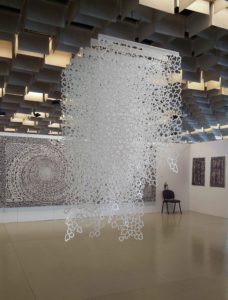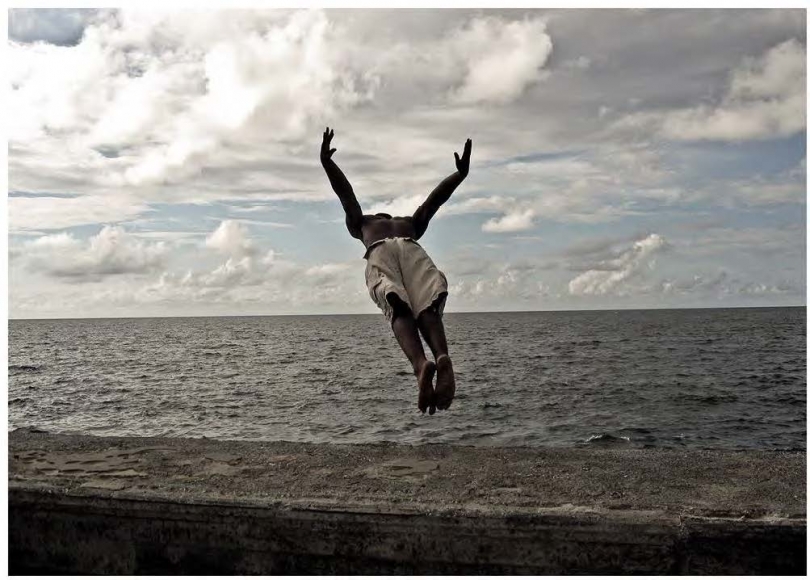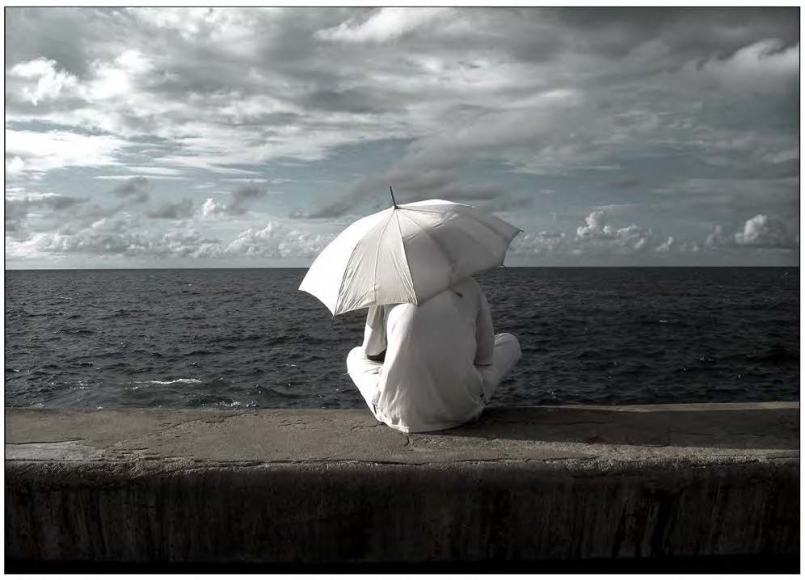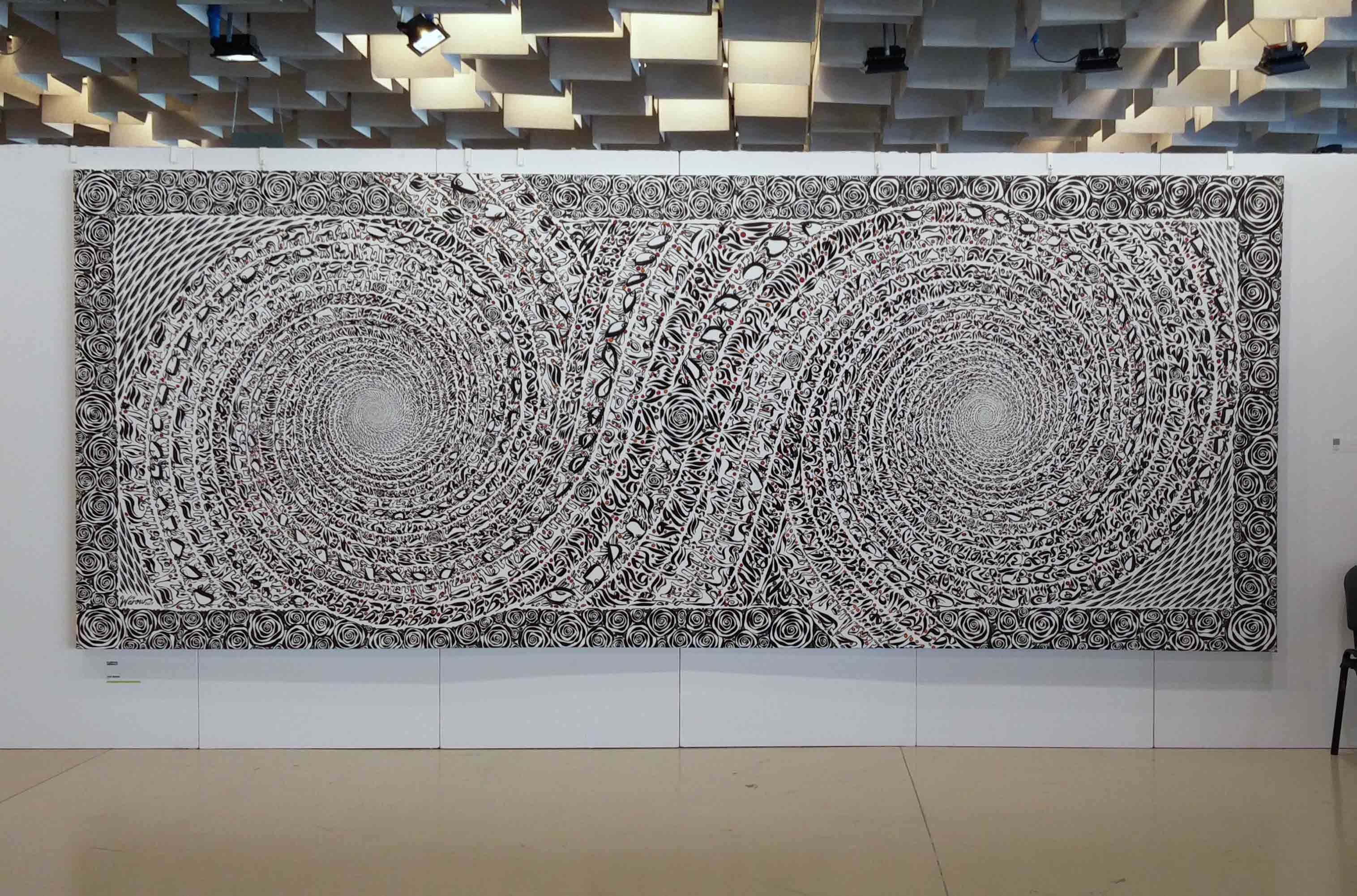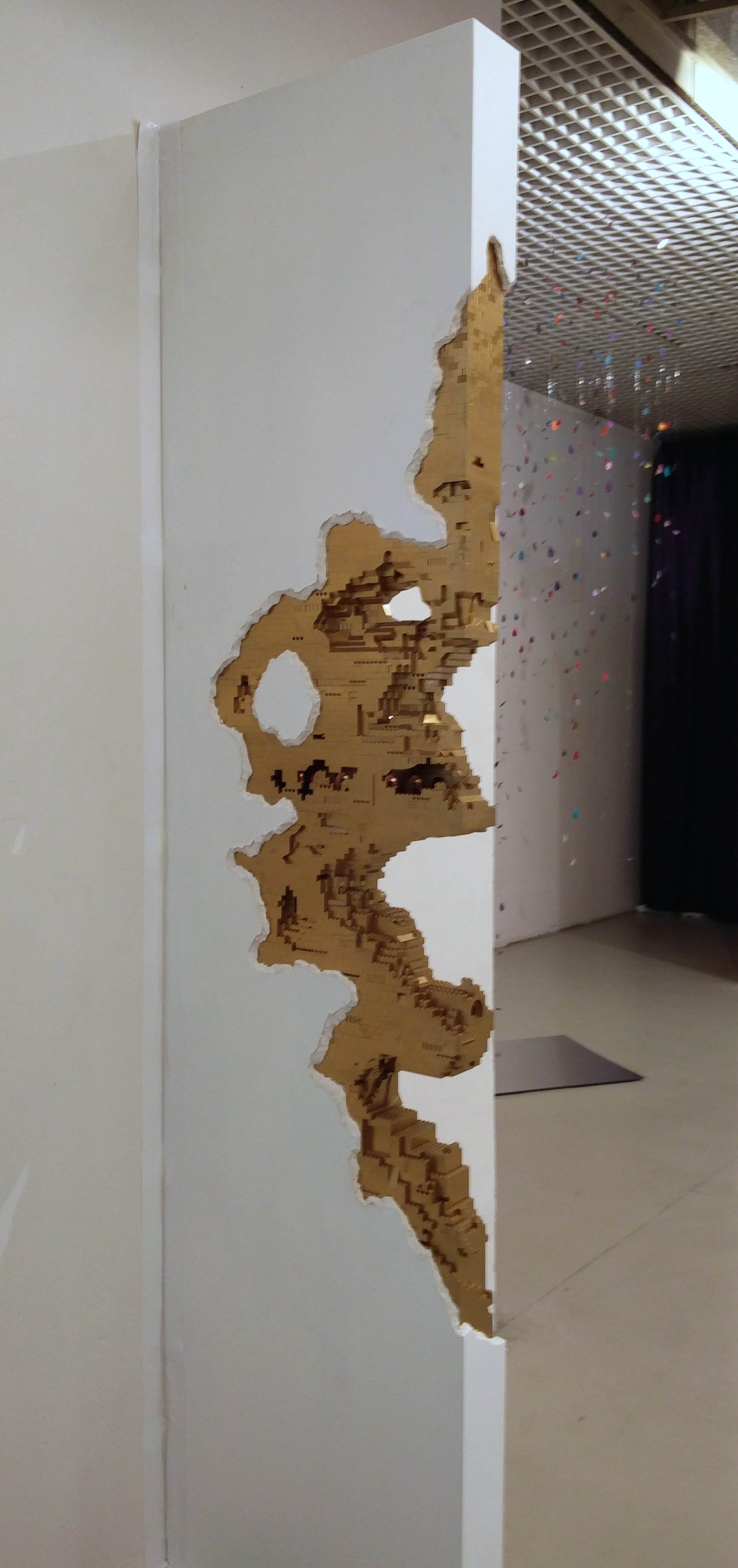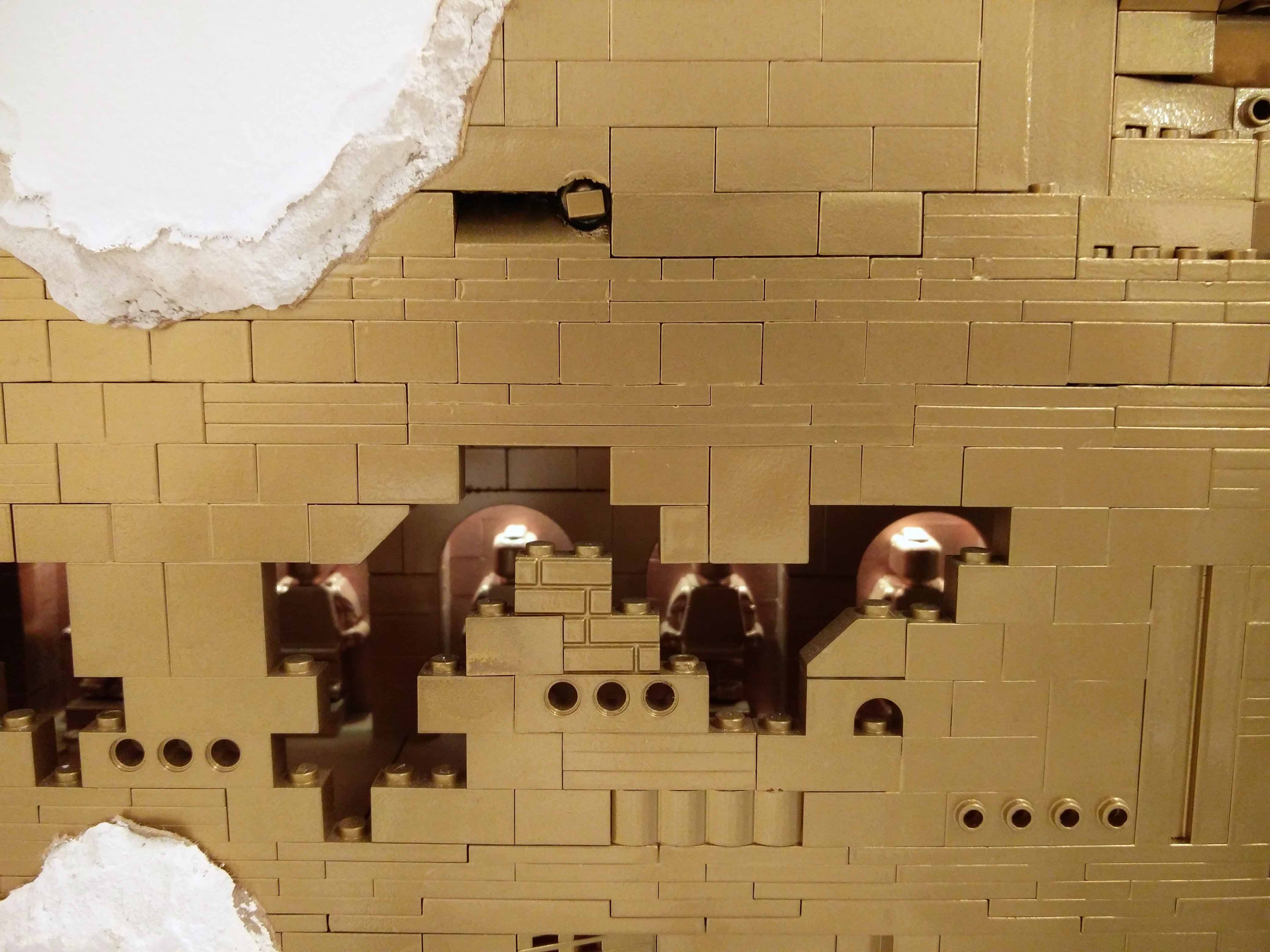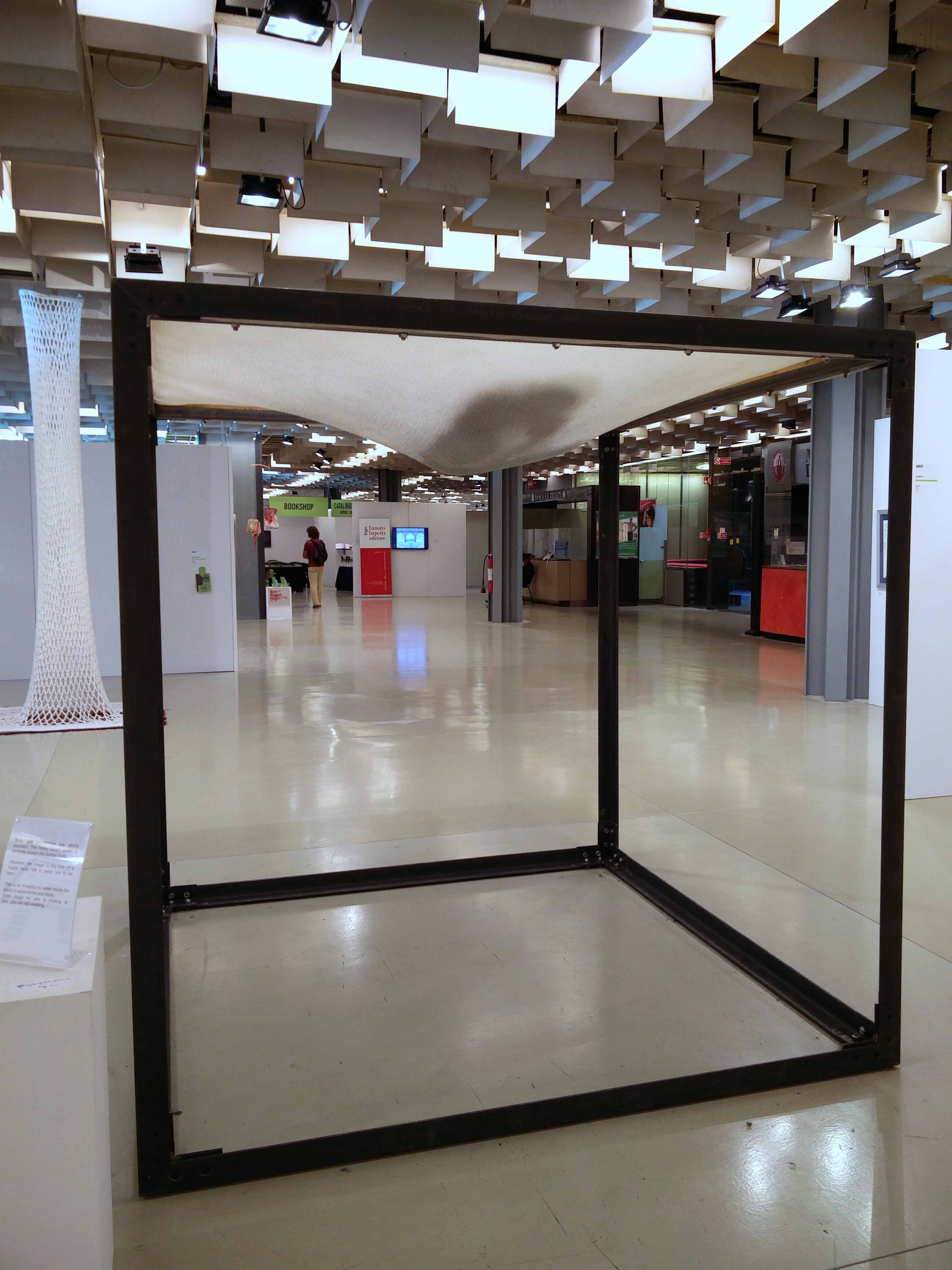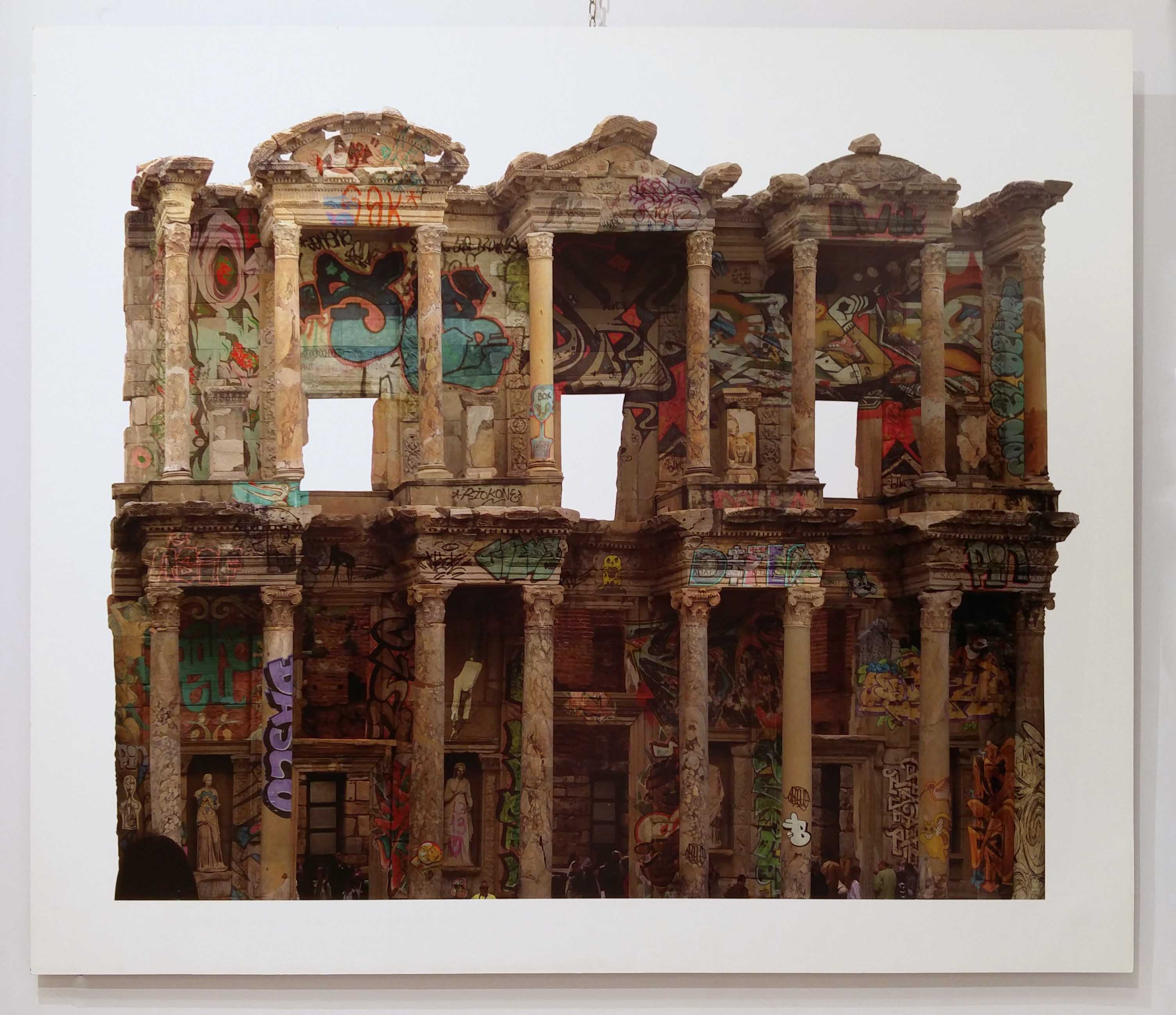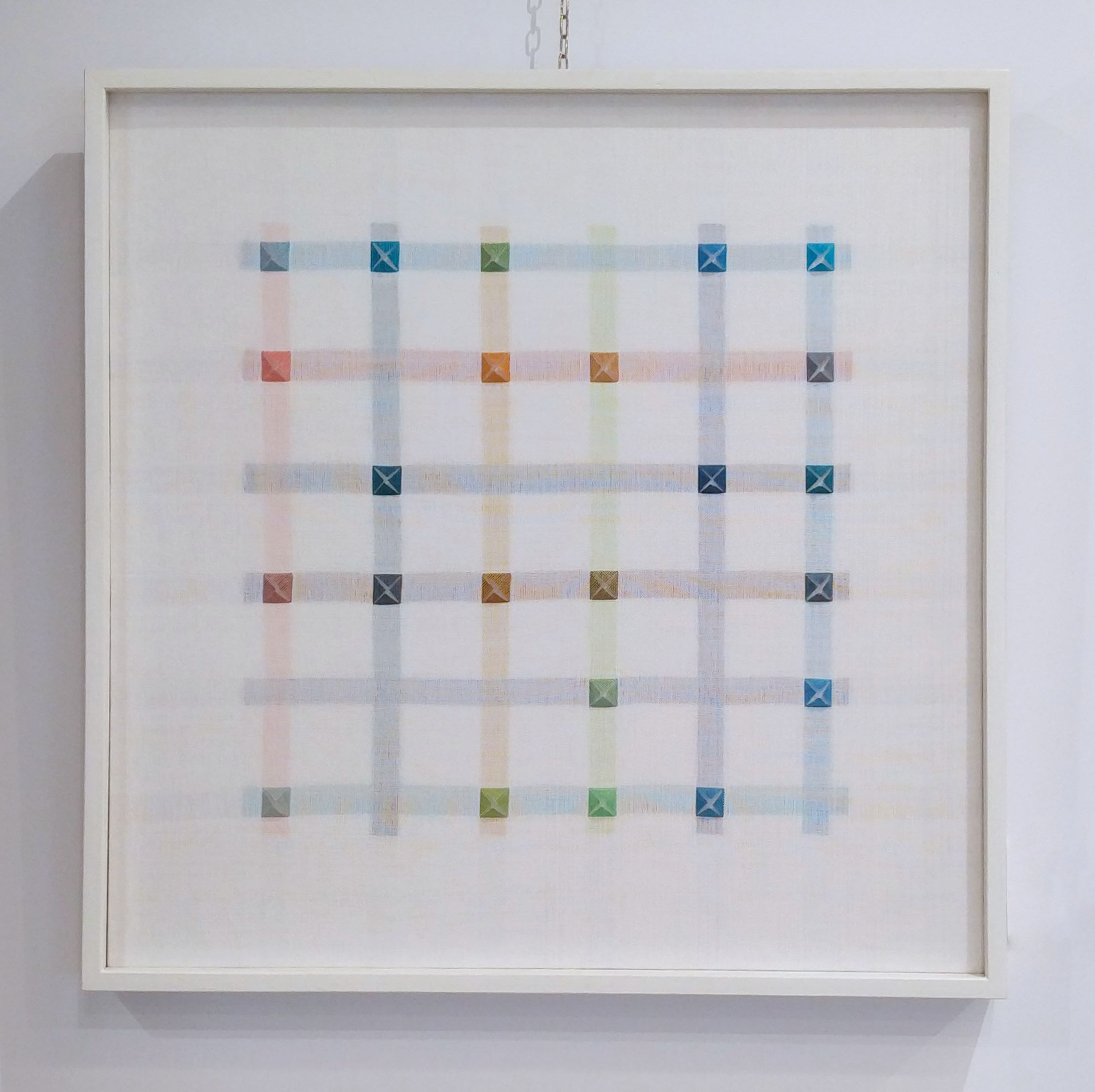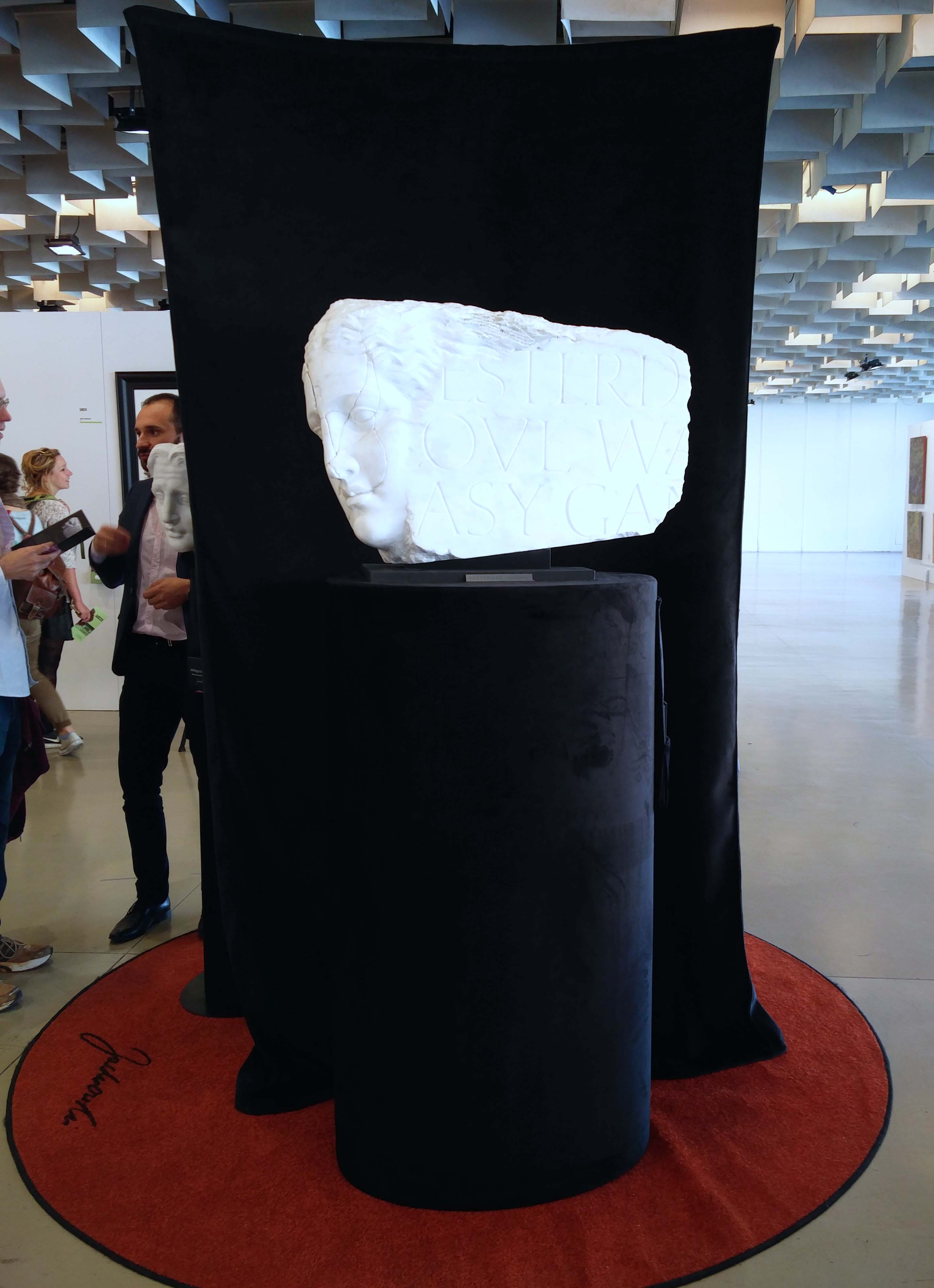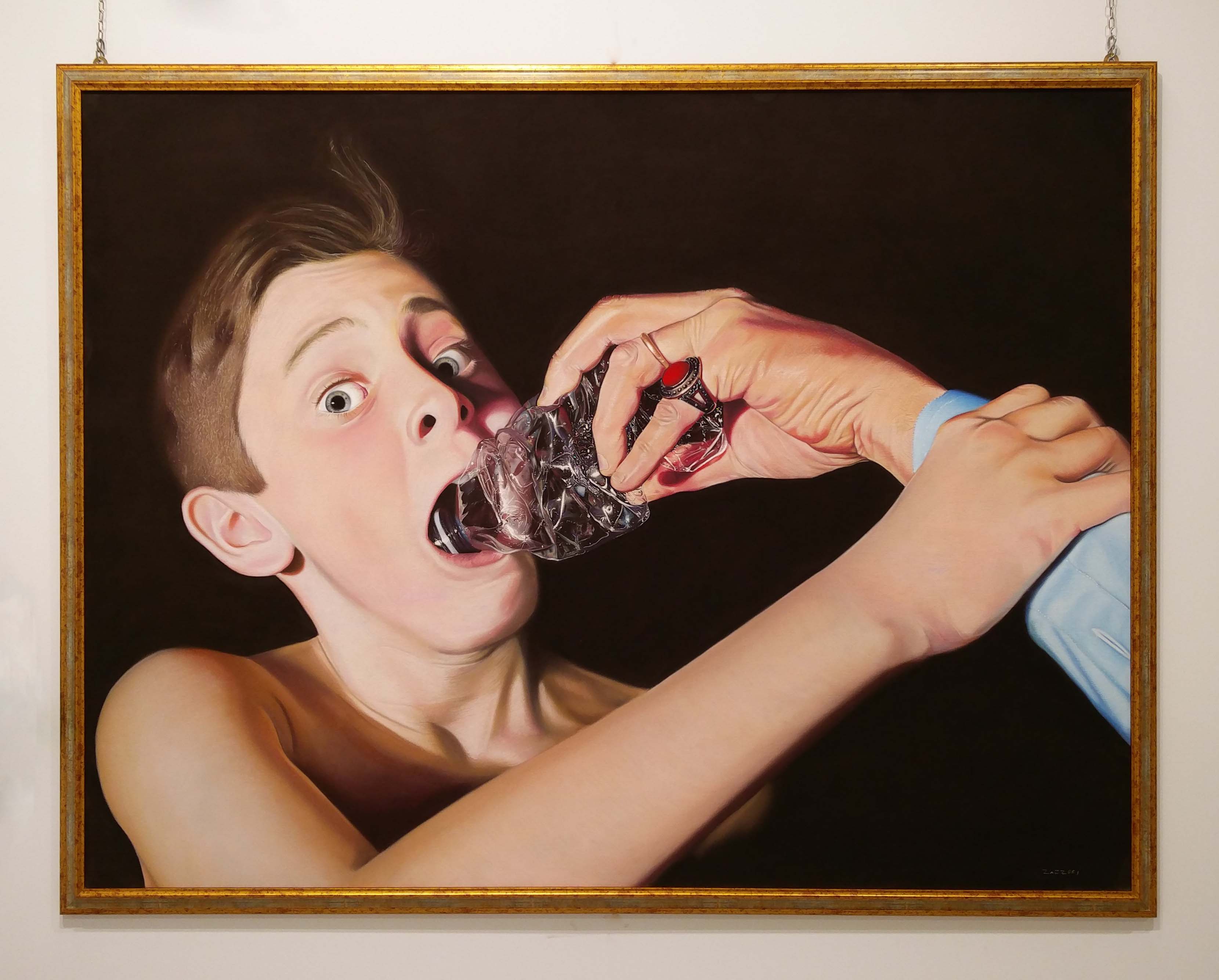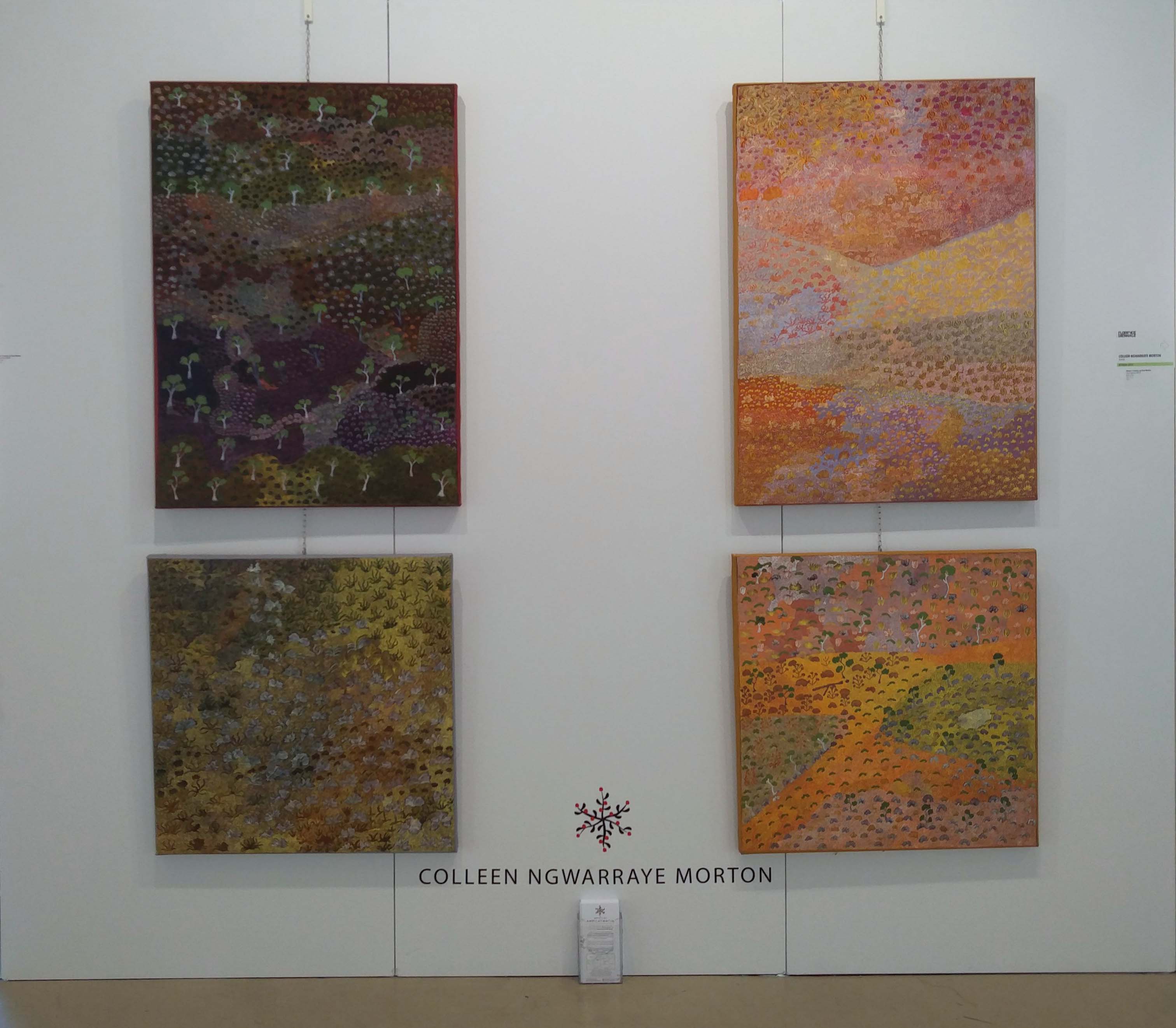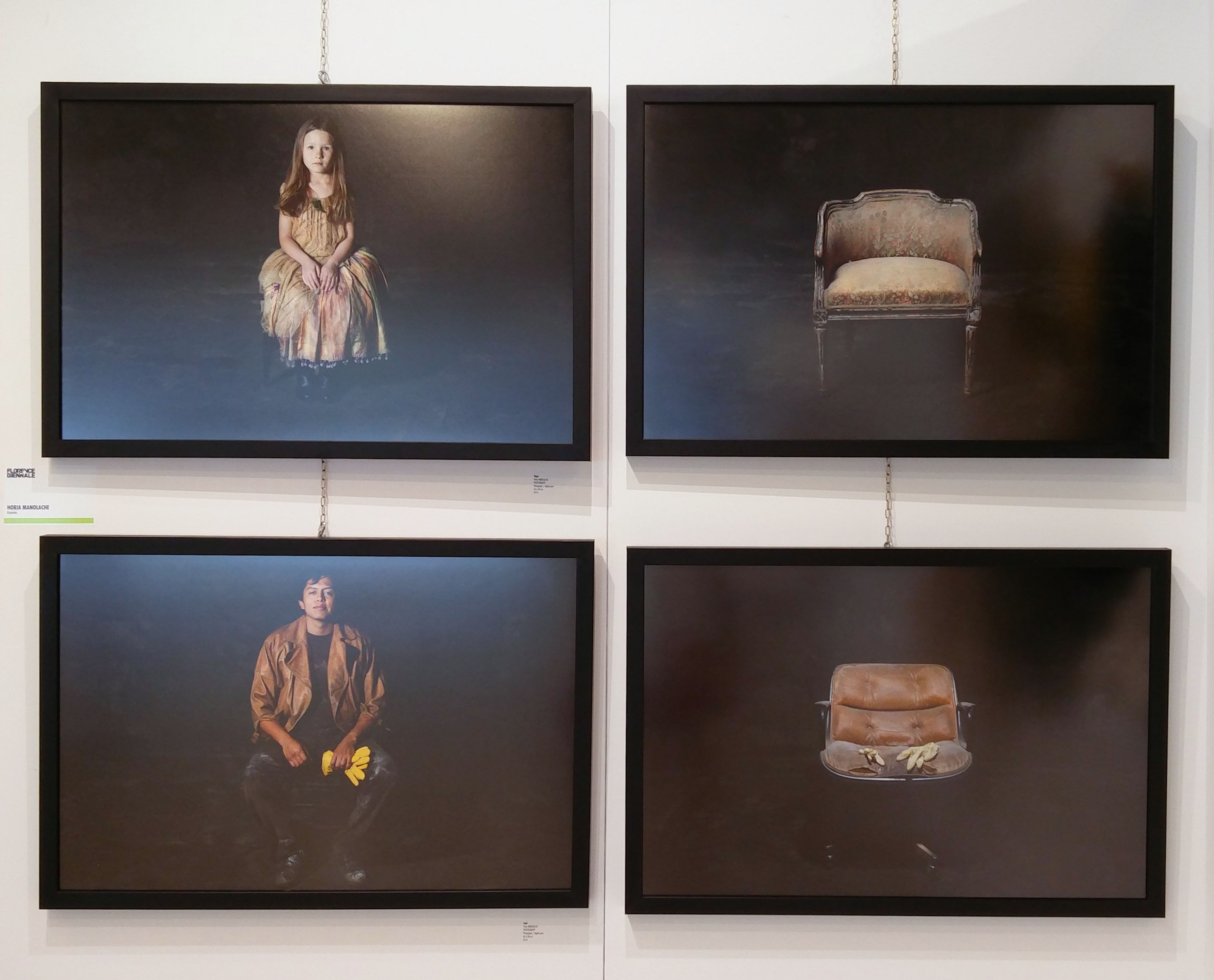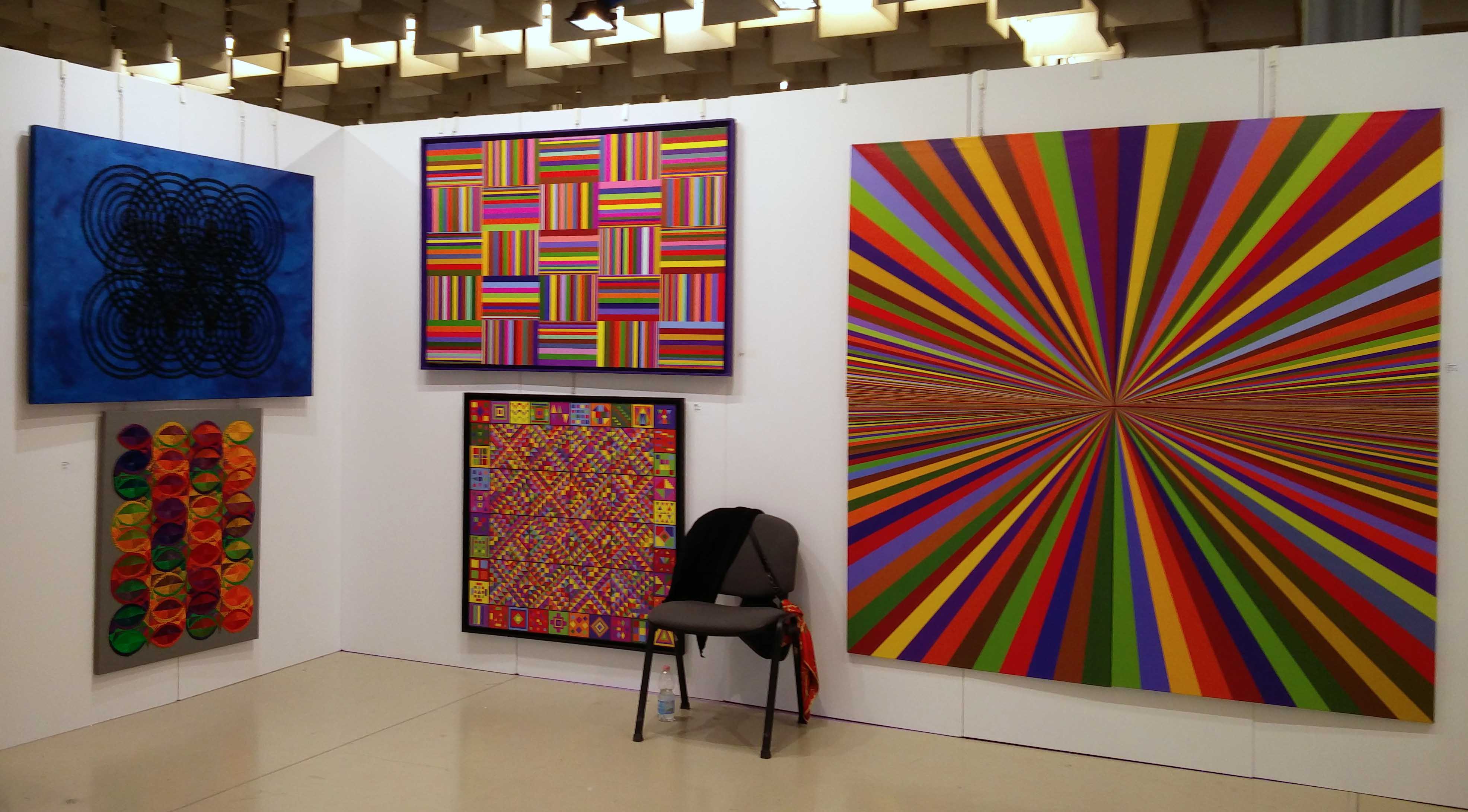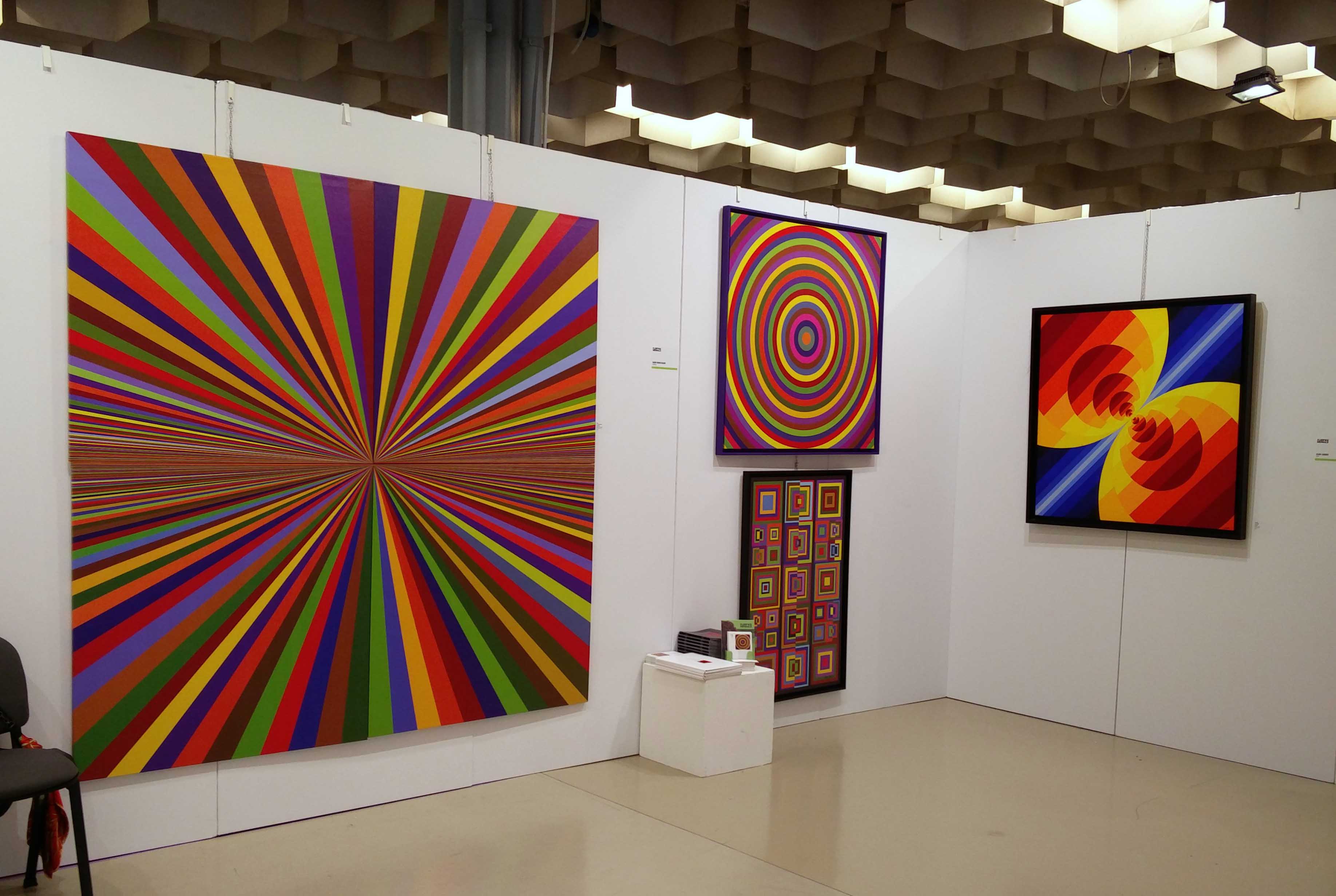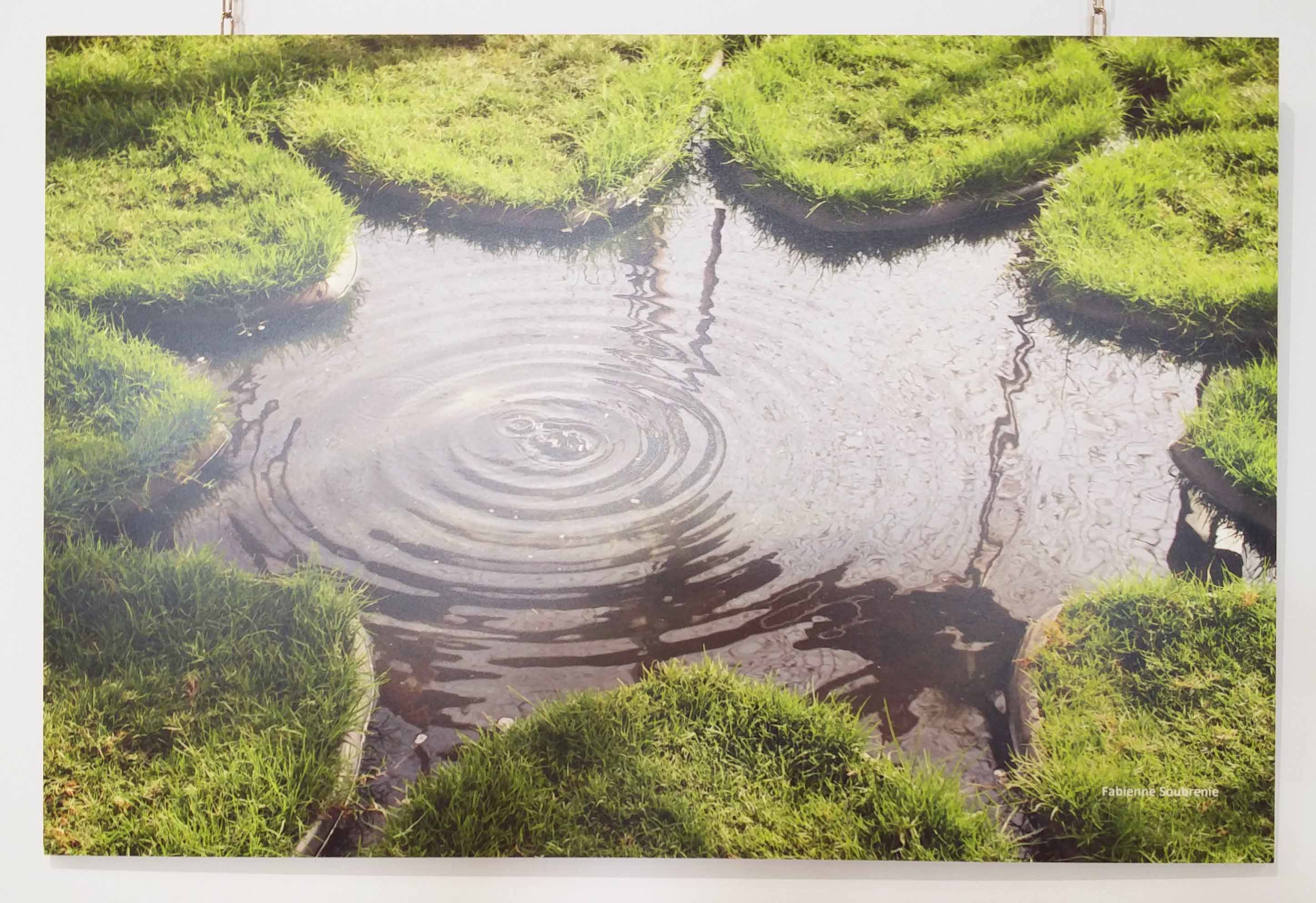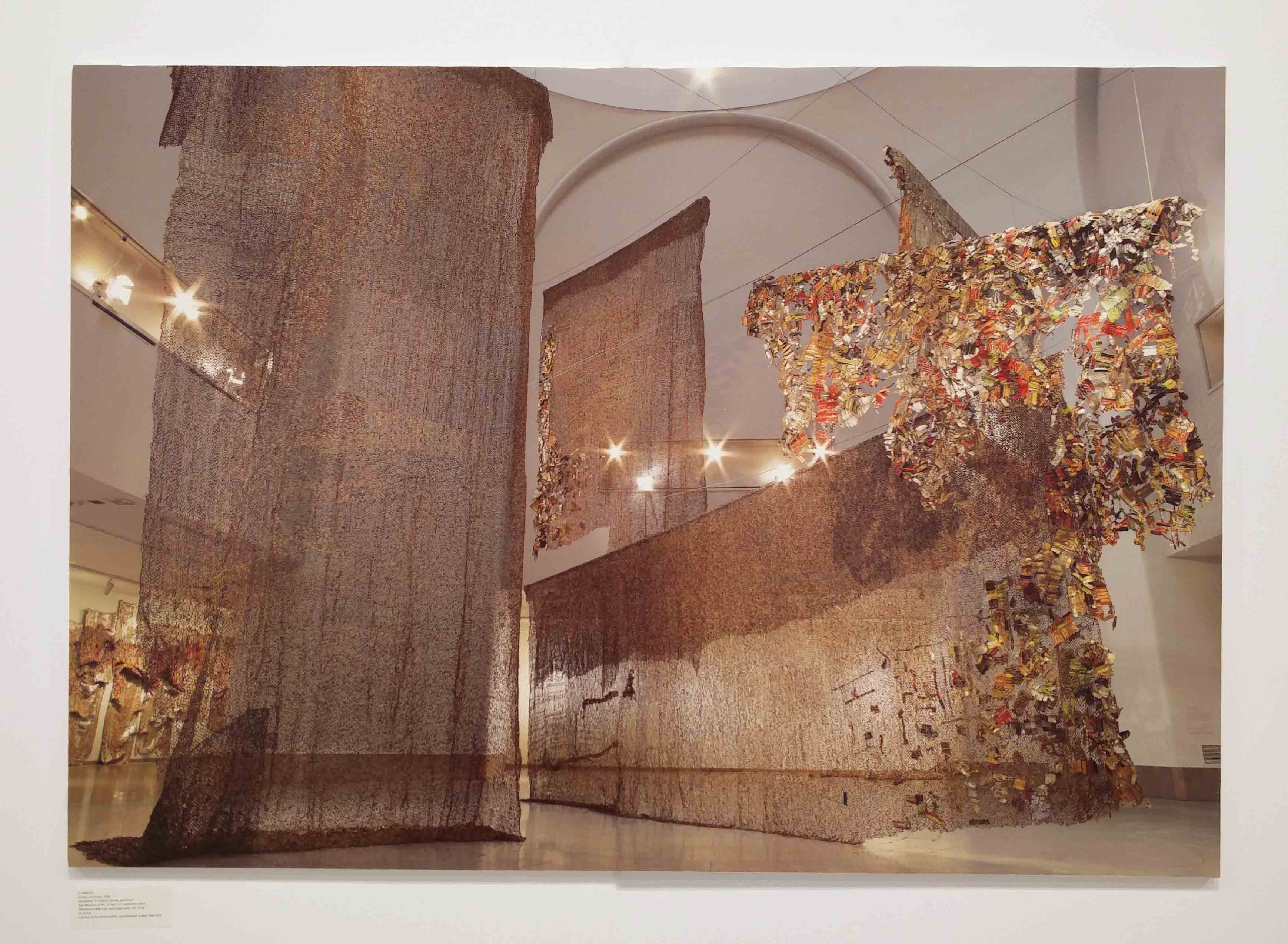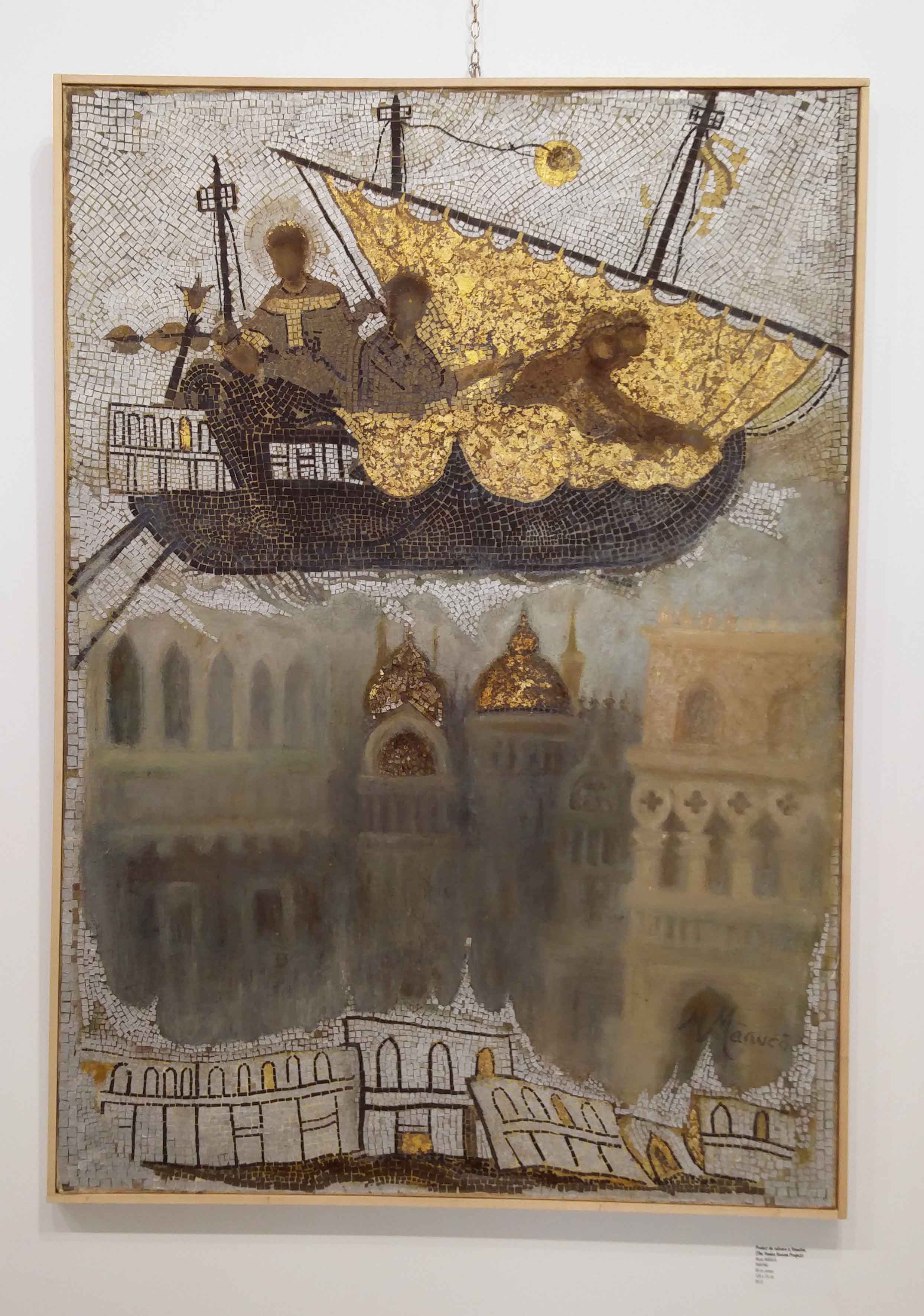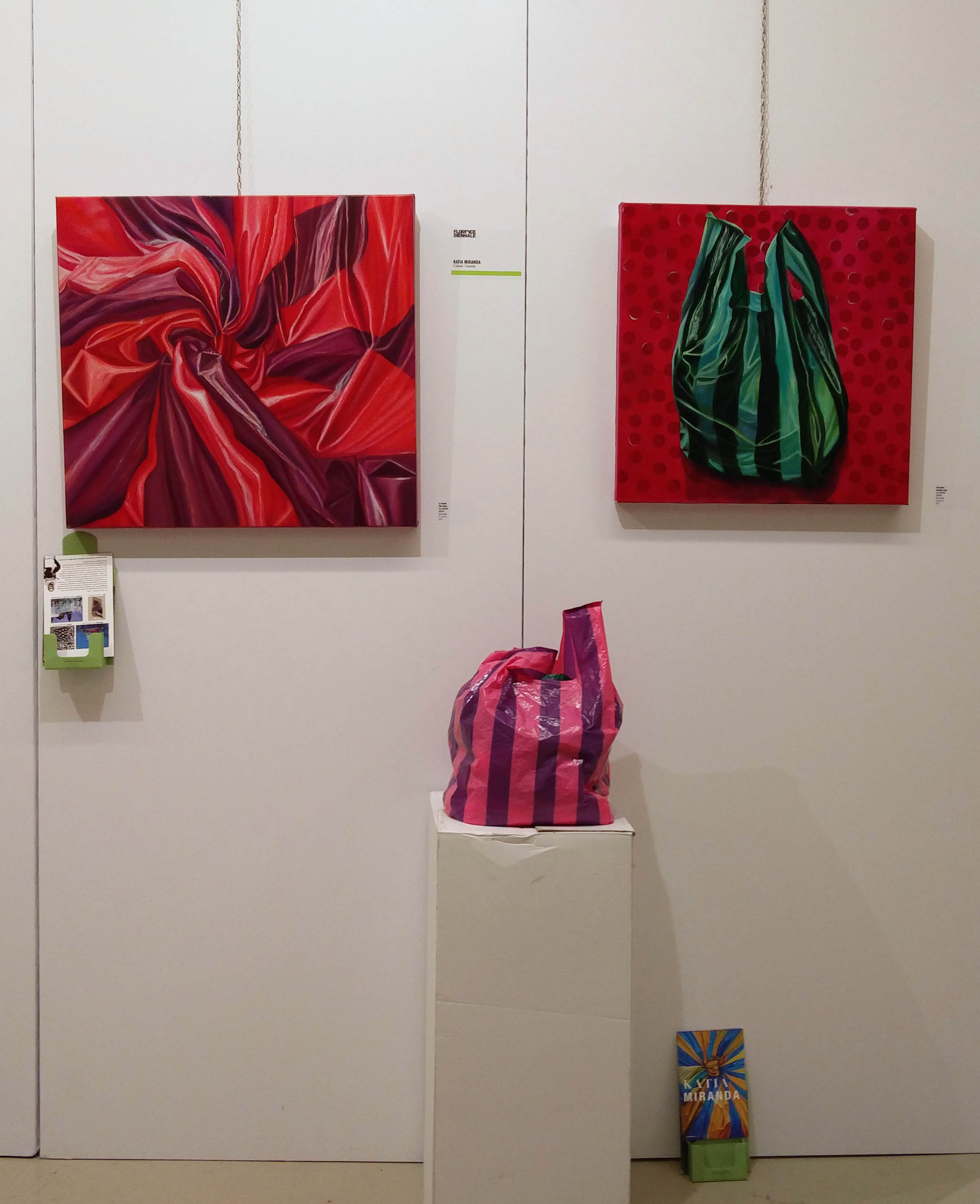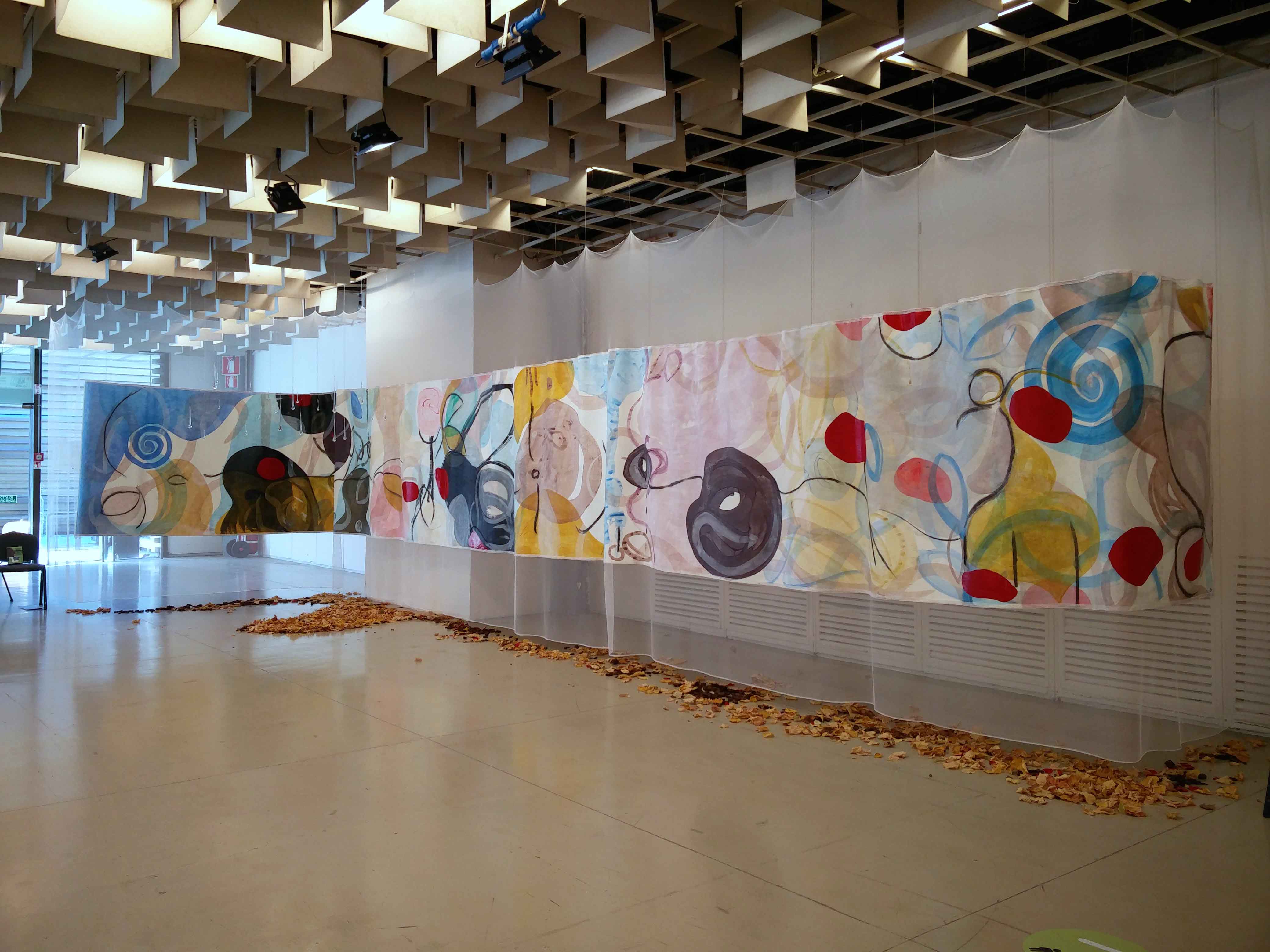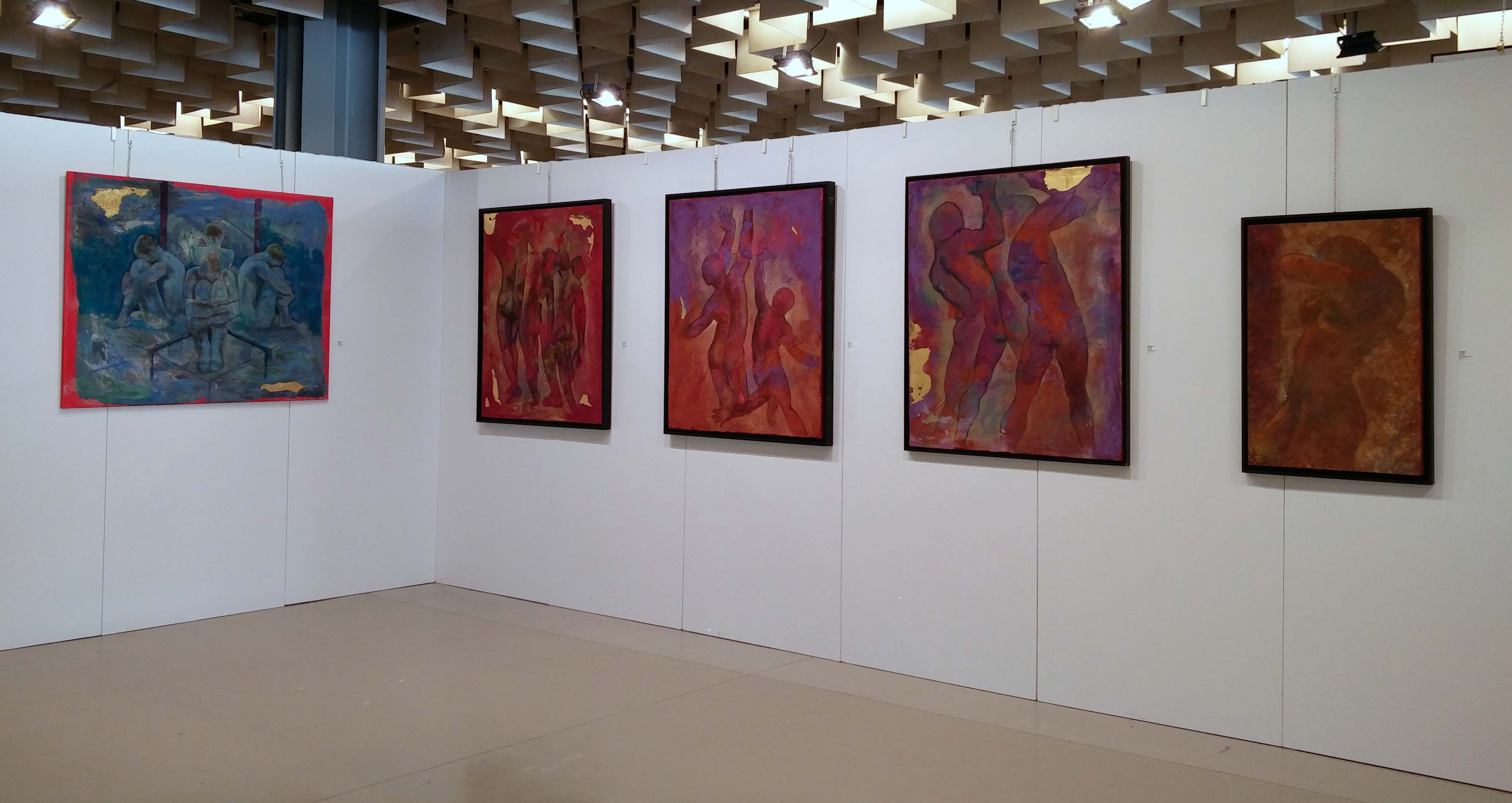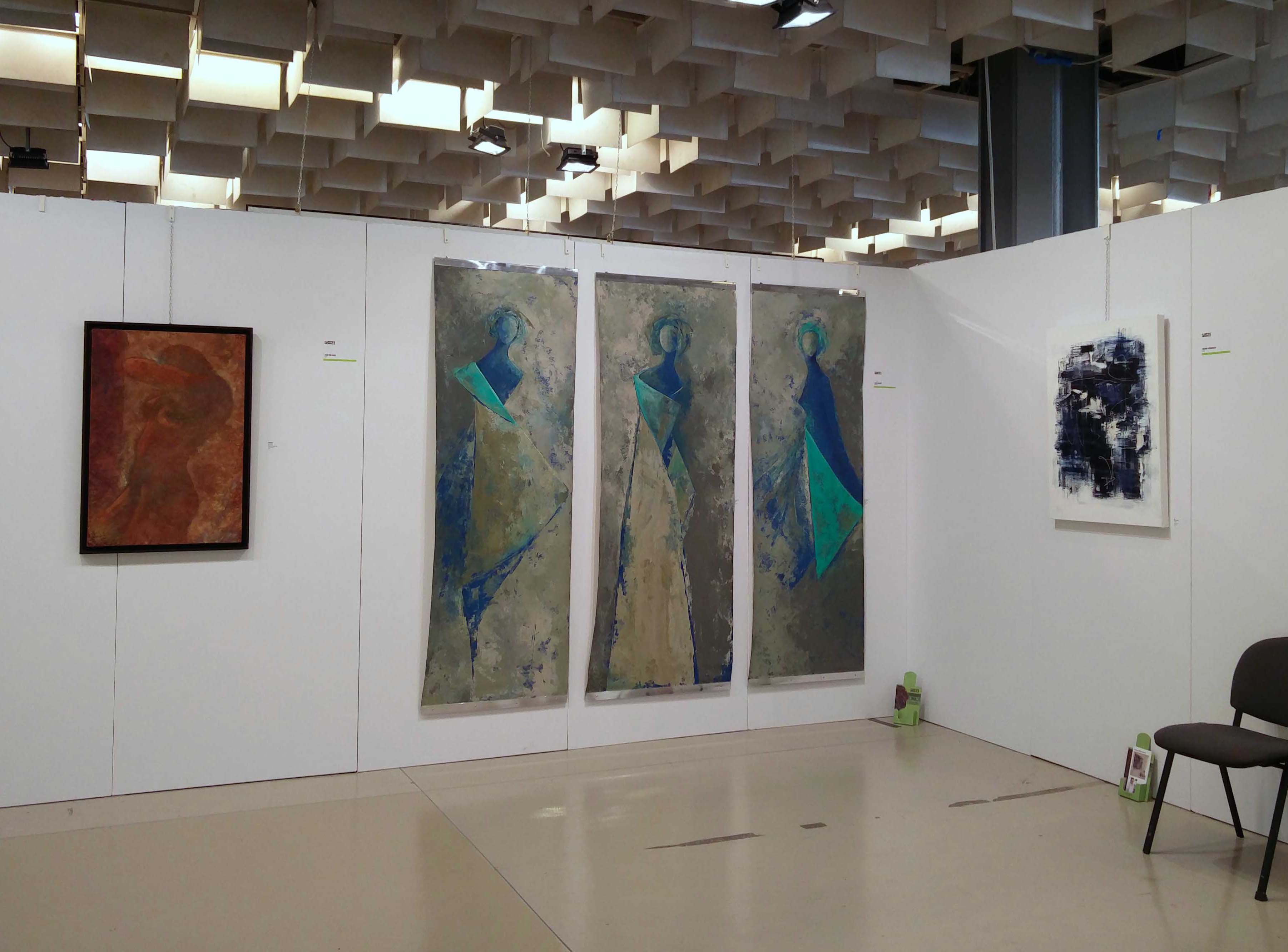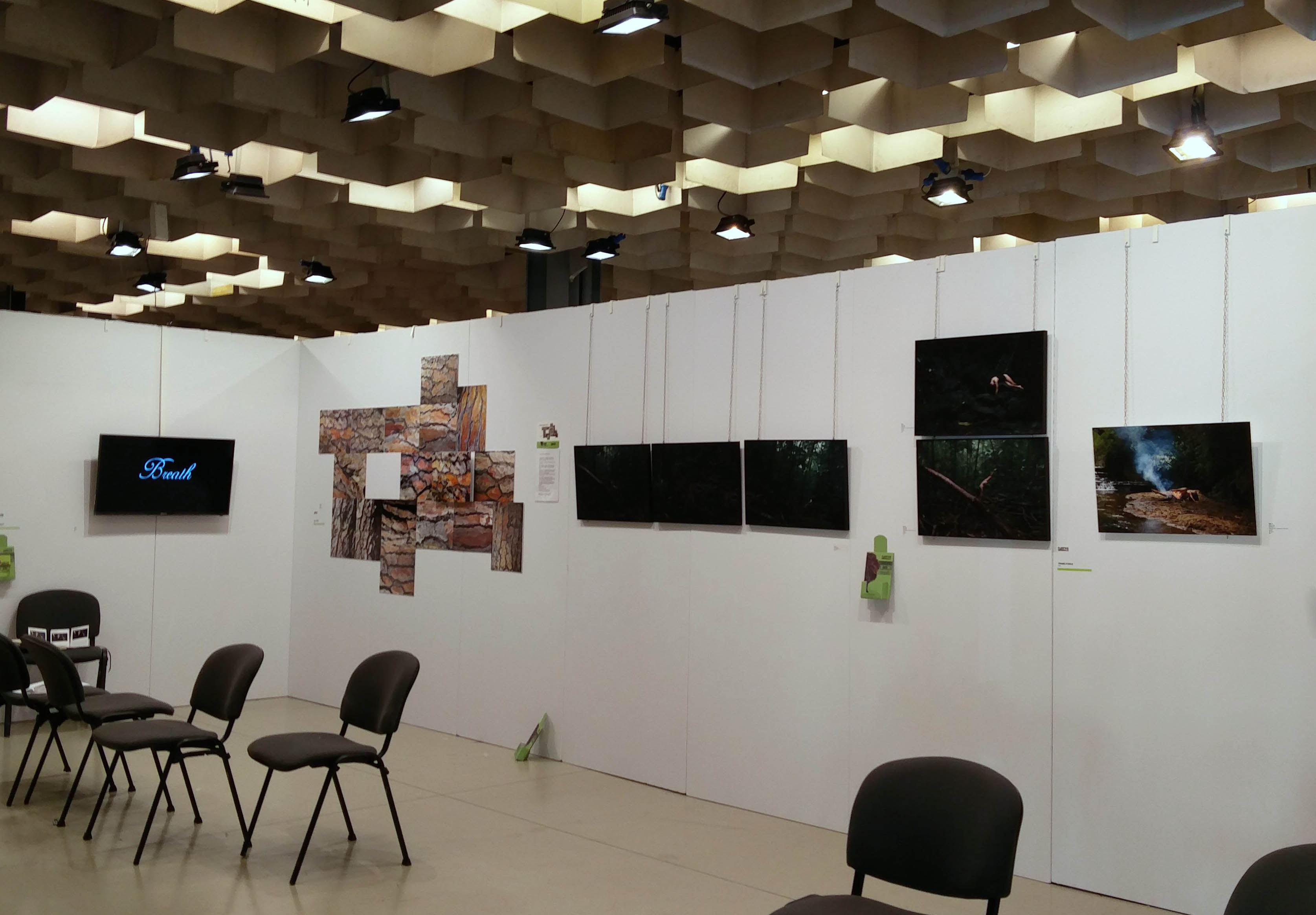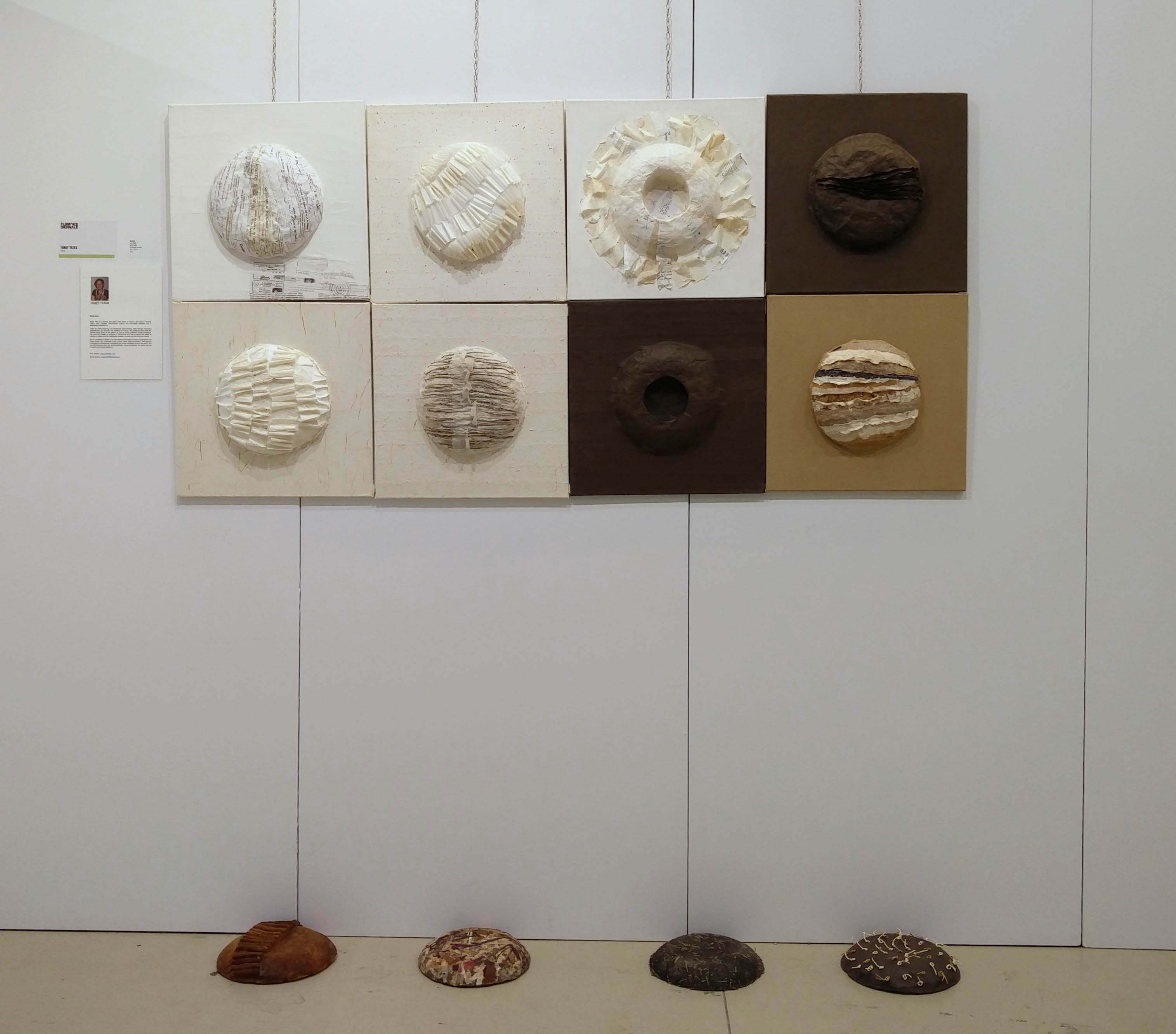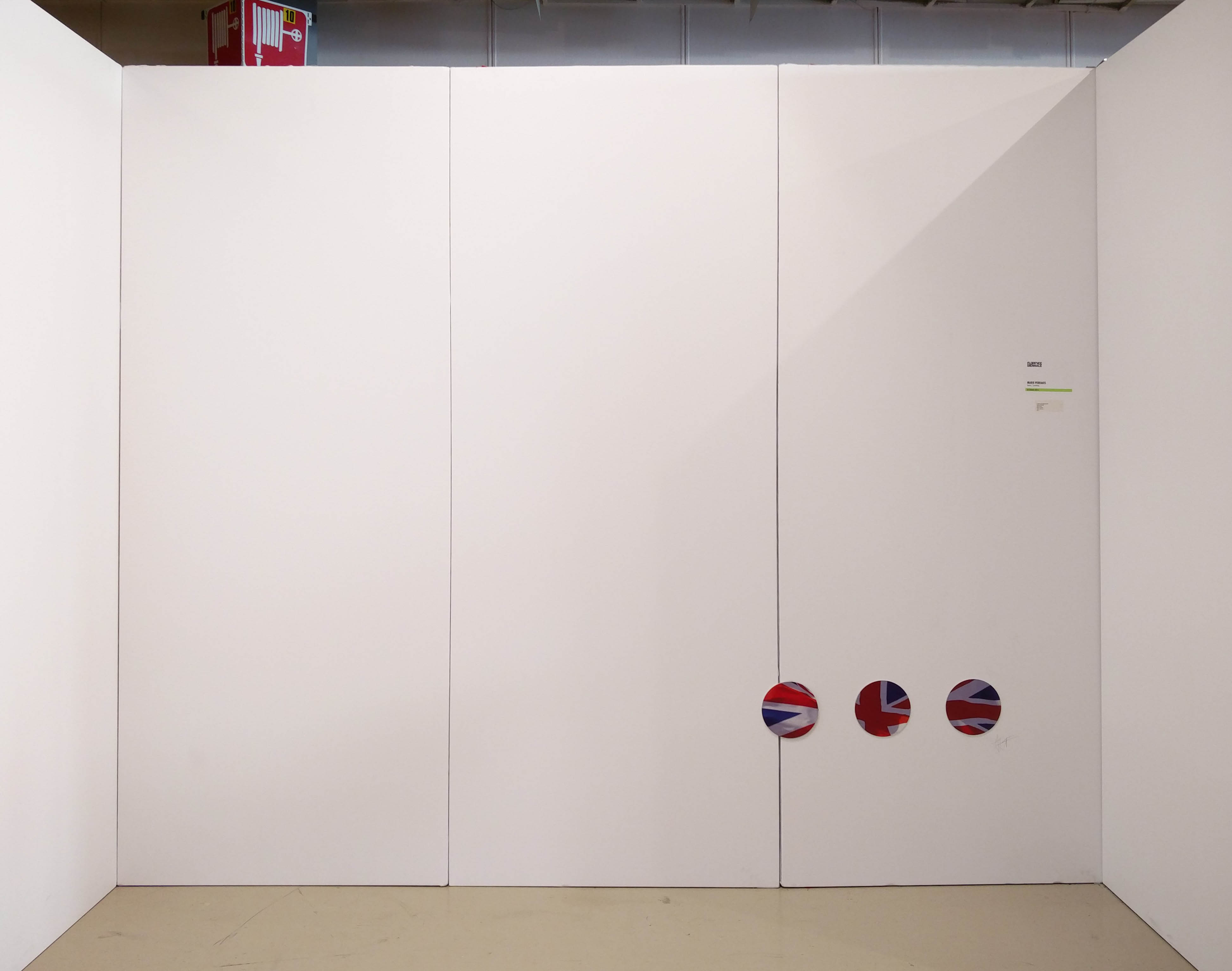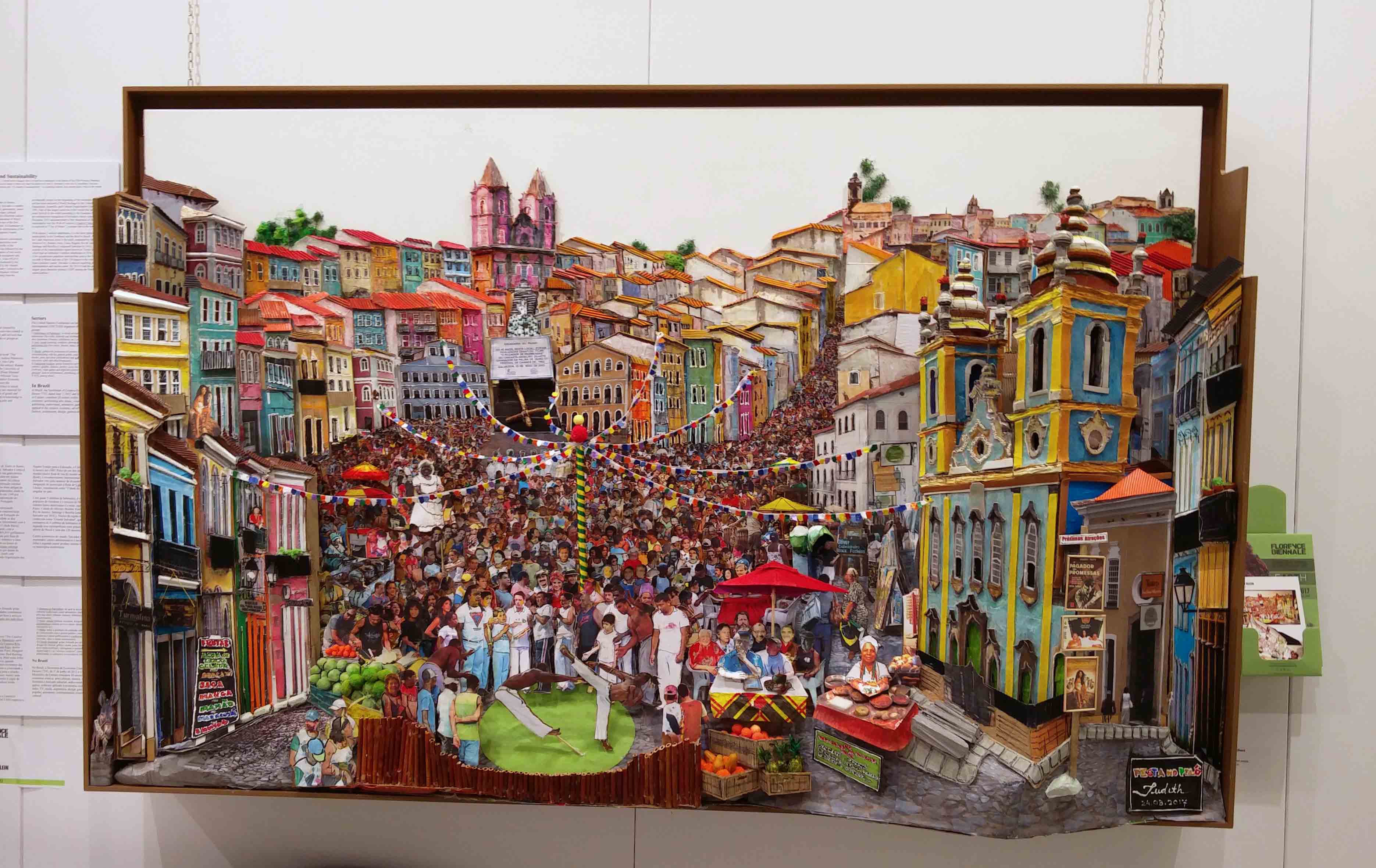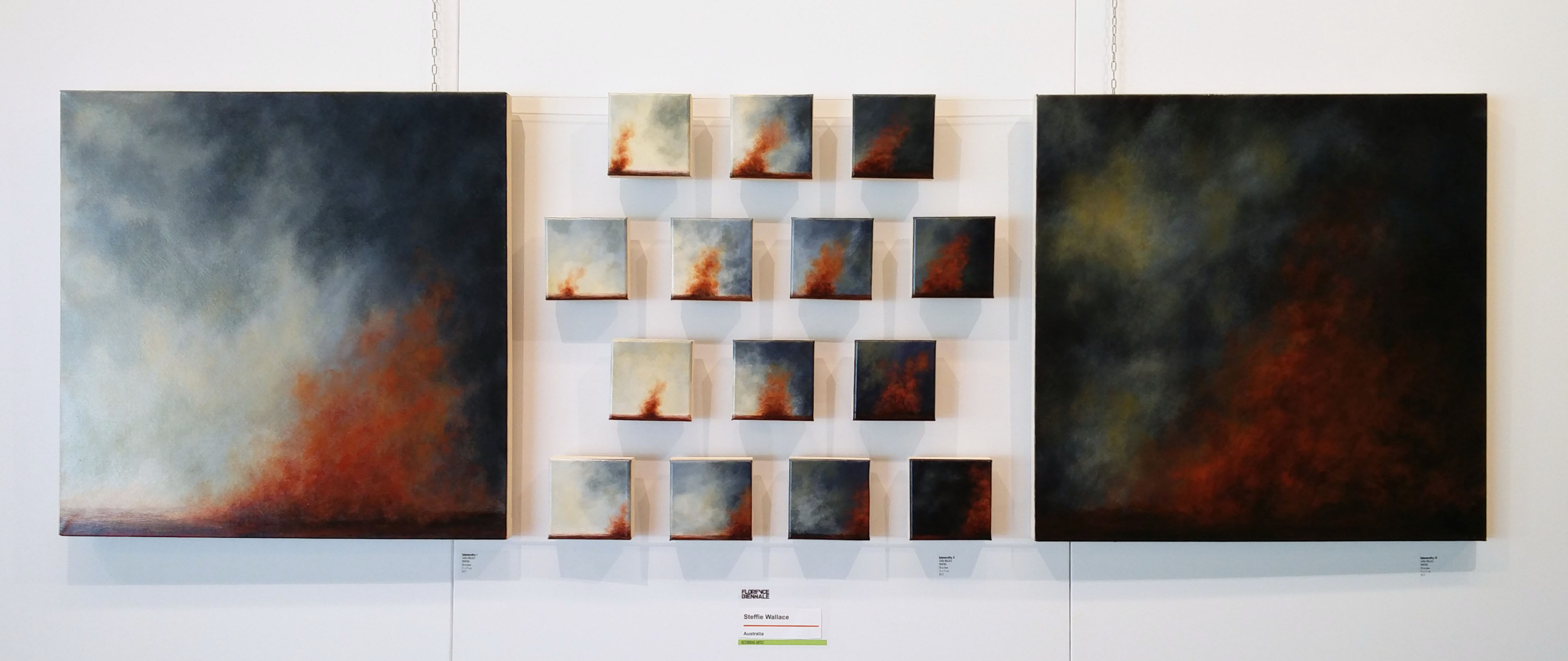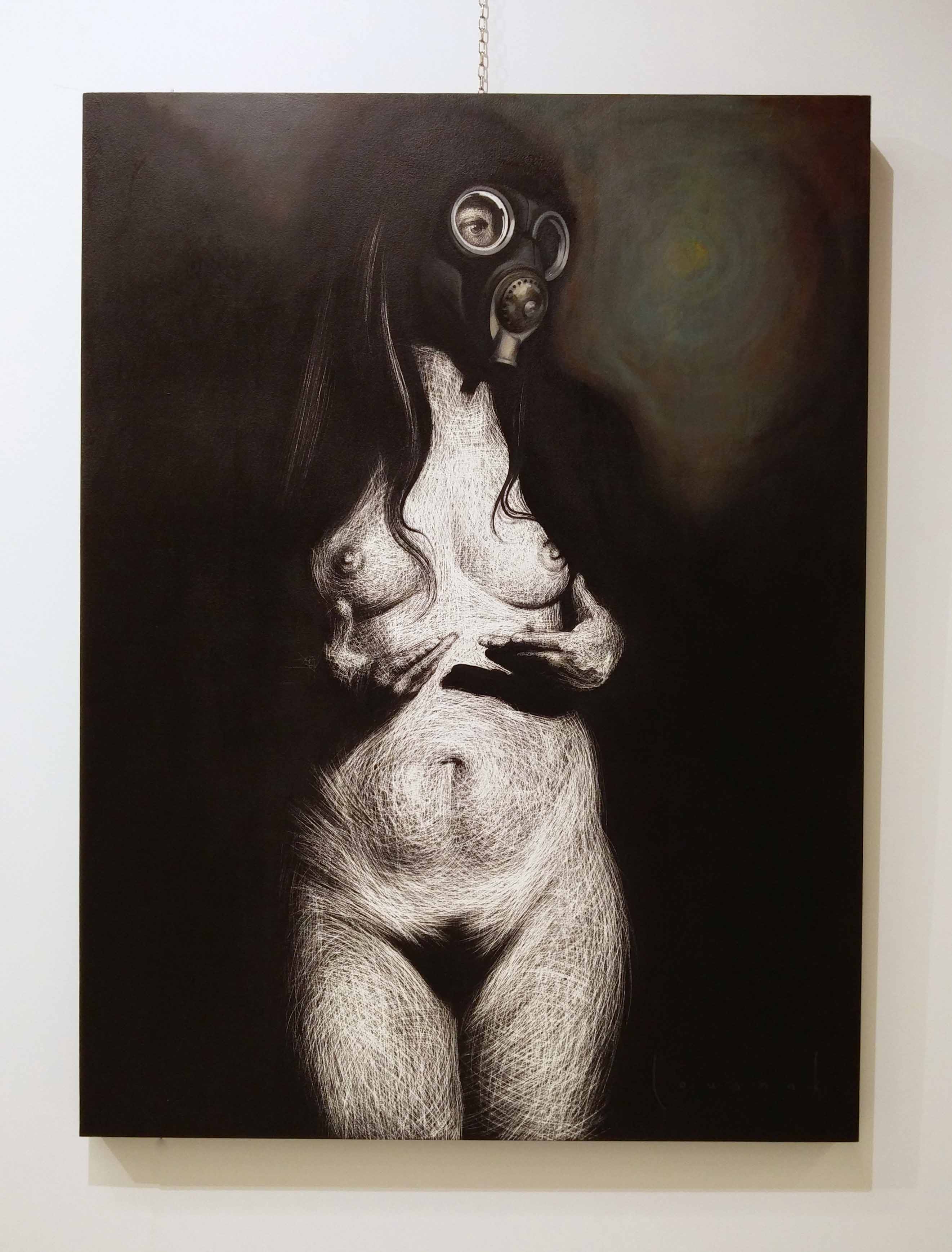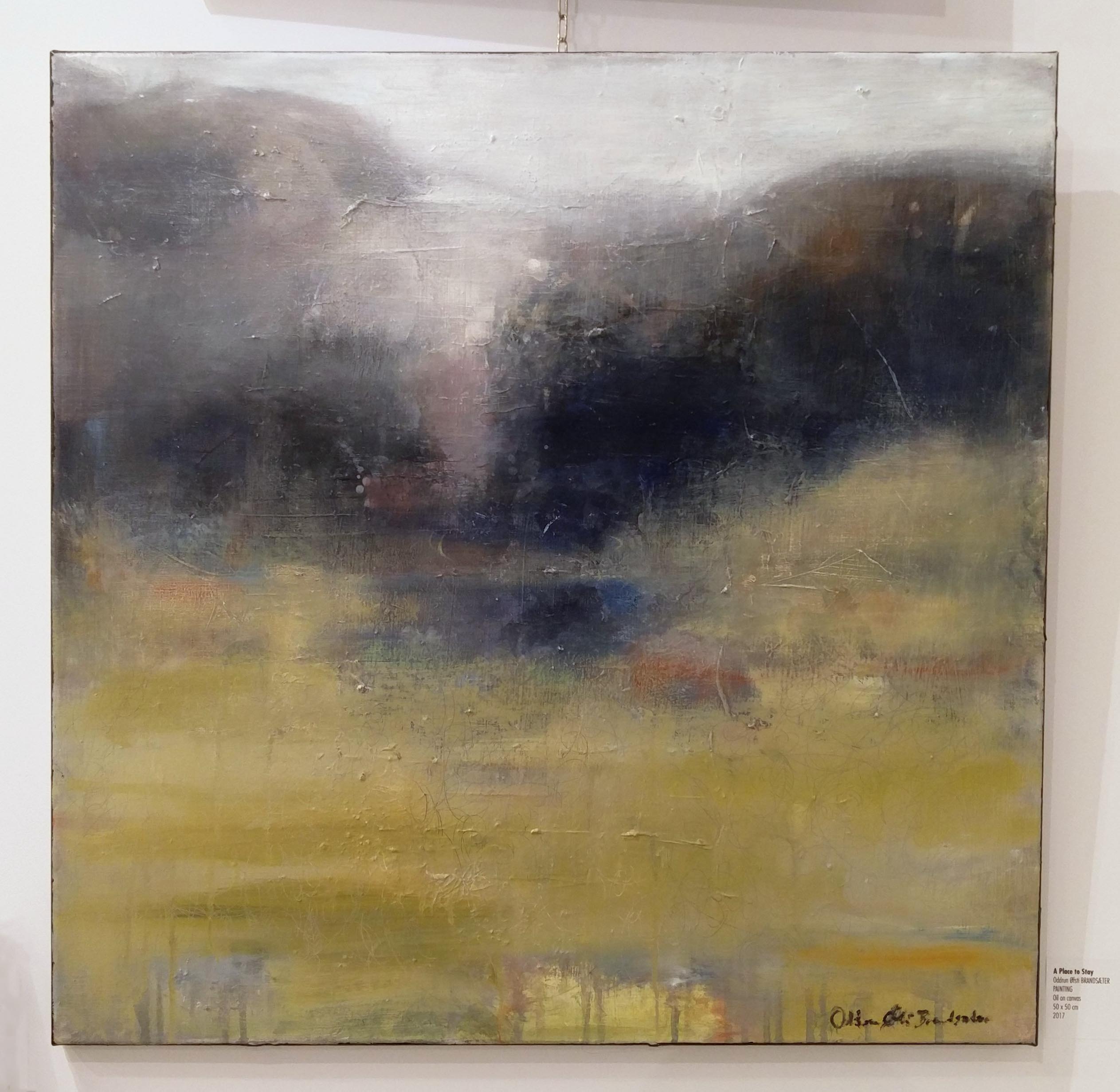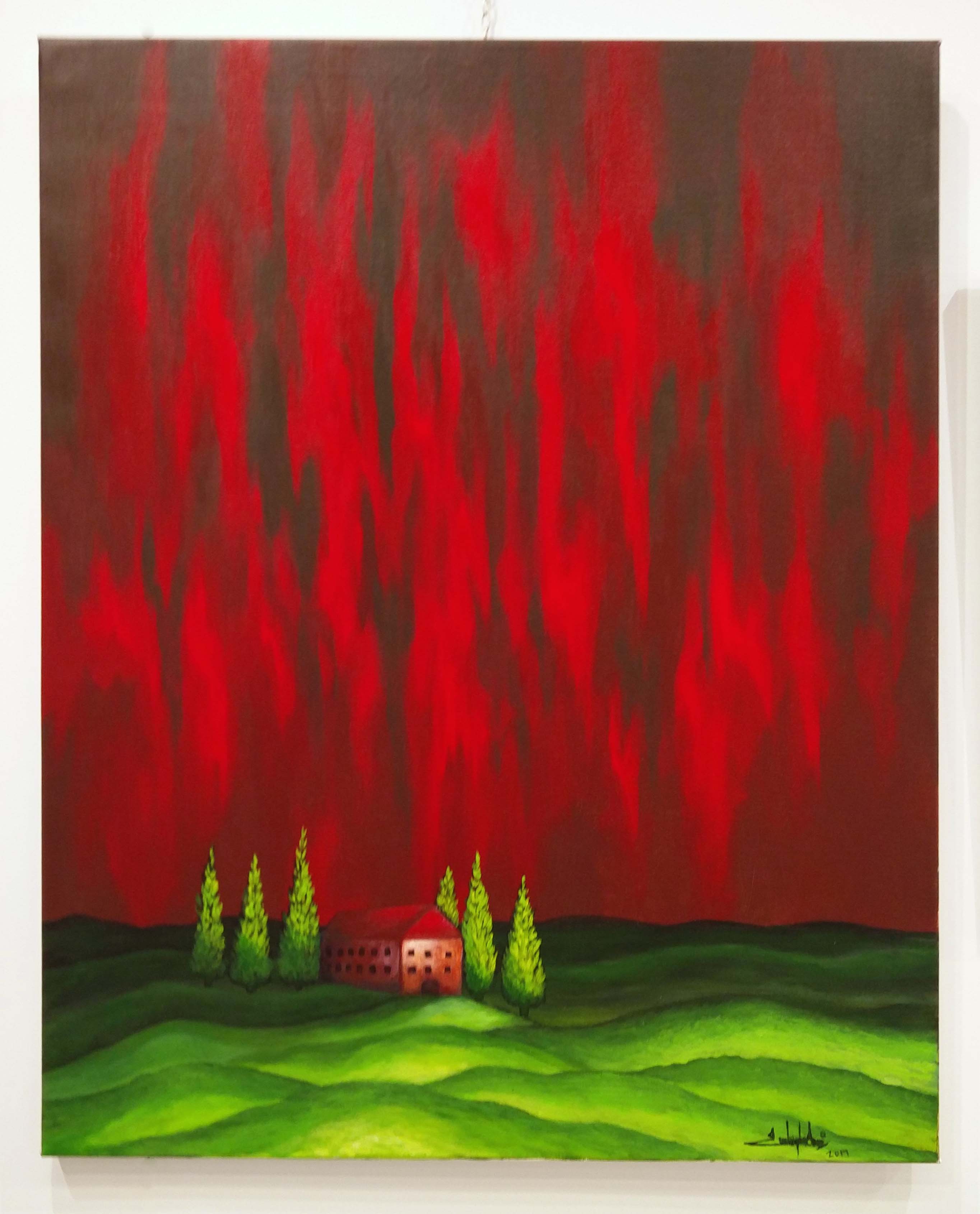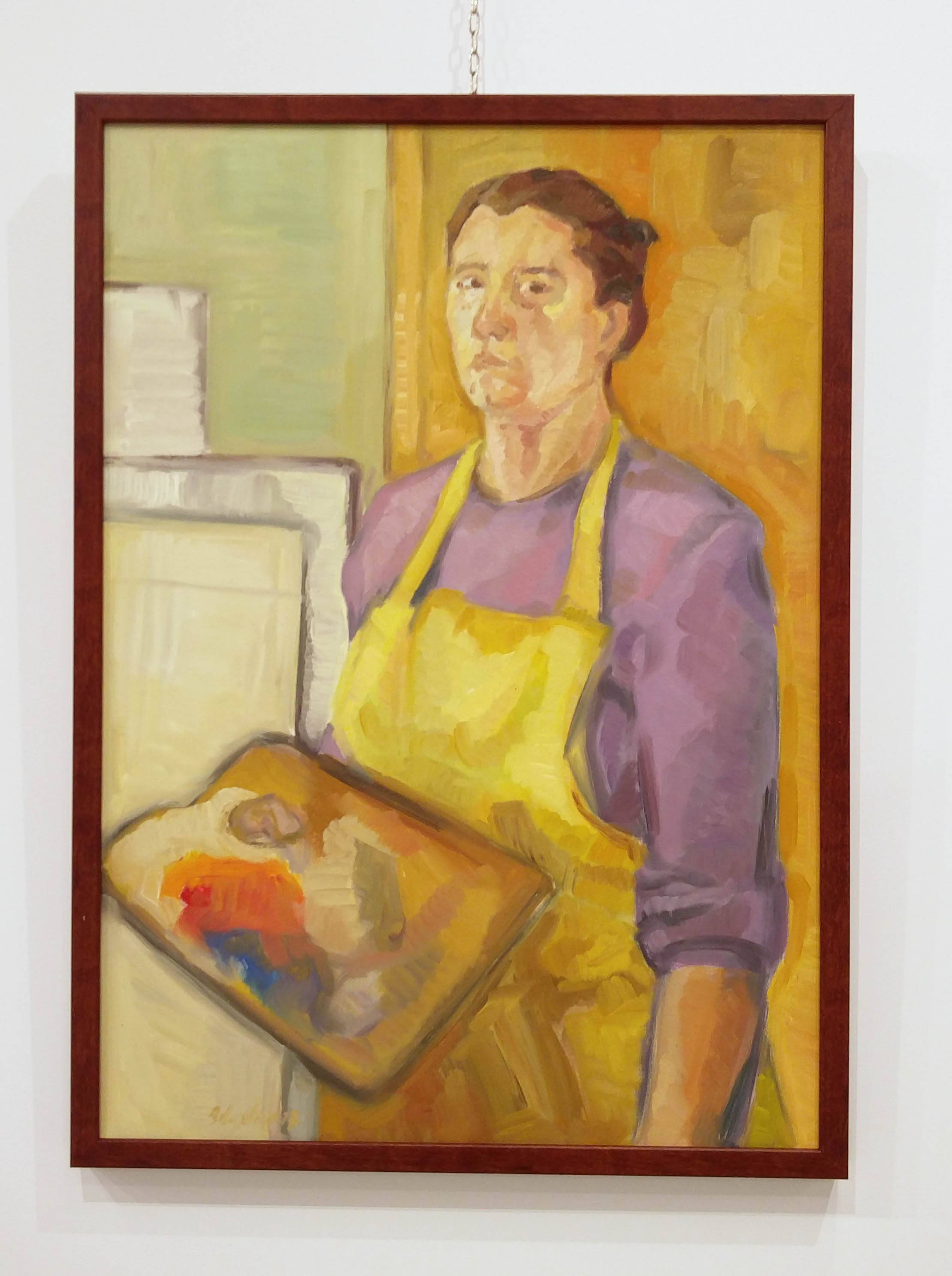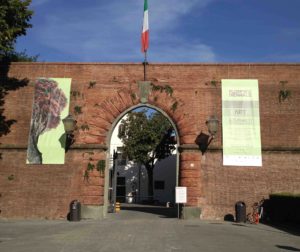 “eARTh: creativity and sustainability” was the theme of this year’s Florence Biennale. It took place from October 6th to 15th and was located in the Padiglione Spadoli in the Fortezza da Basso (part of the Firenzefiera). There were 462 artists, coming from 72 countries. The 20-year-old institution sees herself as an independent platform of the contemporary art production. An international expert jury had chosen the participants out of 2000 candidates. Artists in an age range between 18 and 85 years were presenting 1.357 works. All varieties of contemporary art production were represented, from the more or less classical panel painting, over video to performance.
“eARTh: creativity and sustainability” was the theme of this year’s Florence Biennale. It took place from October 6th to 15th and was located in the Padiglione Spadoli in the Fortezza da Basso (part of the Firenzefiera). There were 462 artists, coming from 72 countries. The 20-year-old institution sees herself as an independent platform of the contemporary art production. An international expert jury had chosen the participants out of 2000 candidates. Artists in an age range between 18 and 85 years were presenting 1.357 works. All varieties of contemporary art production were represented, from the more or less classical panel painting, over video to performance.
This wide range of disciplines makes the presentation difficult, though the curatorial team found appropriate associations between the various artworks. They managed to display oeuvres of different artistic and cultural backgrounds in harmonious contexts. The huge space also allowed extensive installations, although the two-dimensional was dominant, probably because the artworks had to travel around the world to come to Florence.
For that reason, the financial aspect might have caused a certain preselection of participants and oeuvres: candidates had to have the financial resources to send the artworks adequately around the world and pay the participation fee. Therefore, it is also not astonishing, that most artists came from Italy (65) and over 200 from whole Europe. Another big group were the contributors from Asia, headed by 60 Chinese creatives, due to the cooperation with the Chinese Artist Association (AACI) in Italy. Many artists were coming from the Americas, for example 26 from the United States and Argentina each, but as well singles from Guatemala, Ecuador or Cuba. Australia sent out seven and not surprisingly, whole Africa only four. A gleam to the grand sister-Biennale in Venice shows, that even here the gap between traditional, often economic stronger countries to others is visible: National participations are well placed in the two main venues or somewhere hidden in the city.
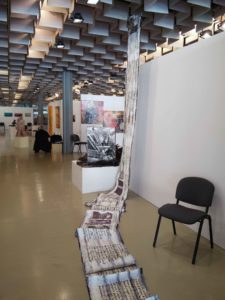 Besides the transportation costs, practical reasons guided artists to choose smaller, less fragile objects. Sometimes, this would not always be their best ones. The long lead-time might also be obstructive. In addition, even if it is only facultative, a personal presence might cause problems.
Besides the transportation costs, practical reasons guided artists to choose smaller, less fragile objects. Sometimes, this would not always be their best ones. The long lead-time might also be obstructive. In addition, even if it is only facultative, a personal presence might cause problems.
Nevertheless, for creatives at the beginning of their carrier it is an opportunity to expose in an international context and to establish contacts. For the visitor it is interesting to be able to discuss directly with the artists, to understand their research and motivation. This is less possible on a traditional art fair where the primary objective is to sell. Collectors and gallerists have the opportunity to discover new talents. Overall, the Florence Biennale enables to appreciate artworks beyond the great art market.
Here some impressions:
Links to the artists’ websites:

